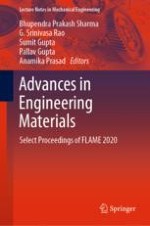2021 | OriginalPaper | Chapter
Challenges and Materials in Artificial Organ Manufacturing
Authors : Sumit Budhiraja, Prerna Priya Ashok, K. Mathiyazhagan
Published in: Advances in Engineering Materials
Publisher: Springer Singapore
Activate our intelligent search to find suitable subject content or patents.
Select sections of text to find matching patents with Artificial Intelligence. powered by
Select sections of text to find additional relevant content using AI-assisted search. powered by
